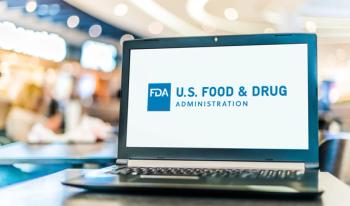
Streamlining Pain Management: Shore Medical Center's Pharmacist-Driven Opioid Conversion Initiative

Shore Medical Center enhances patient safety with a pharmacy-driven intravenous to oral opioid conversion protocol, minimizing risks and improving pain management.
Pharmacy Times® interviewed Elizabeth DeMarco, PharmD, BCPS, pharmacy clinical coordinator at Shore Medical Center, on Shore Medical's pharmacy-driven intravenous (IV) to oral opioid conversion protocol, which is a key component of its broader opioid stewardship initiative. The protocol aims to enhance patient safety by minimizing IV opioid use, therefore reducing risks (eg, respiratory depression) while facilitating smoother transitions to outpatient care.
Pharmacists are central to this process because they can proactively identify appropriate conversion opportunities, determine equipotent oral doses using a standardized chart, and select preferred oral opioids while maintaining the original dosing frequency with minimum limits.
Pharmacy Times: Can you describe the purpose behind this opioid conversion initiative?
Elizabeth DeMarco, PharmD, BCPS: The primary purpose of the Pharmacy-Driven IV to Oral Opioid Conversion Protocol is to promote safer, more effective pain management by minimizing unnecessary IV opioid use. IV opioids are associated with a higher risk of adverse events (AEs), including increased sedation, respiratory depression, and potential intubation. Prioritizing oral opioids reduces these risks, supports a smoother transition to outpatient care, and aligns with multimodal pain management strategies.
This initiative is part of a broader institutional effort to combat the opioid epidemic through stewardship efforts. In addition to this protocol, we’ve implemented several other initiatives—including prioritizing nonopioid analgesics in the emergency department (ED) and establishing a partnership with an outpatient treatment center to support patients transitioning from detox to outpatient care. Together, these efforts reflect [Shore Medical's] commitment to reducing opioid-related harm while maintaining effective pain control in the acute care setting.
Pharmacy Times: How does the policy address dosing frequency when converting from IV to PO opioids?
DeMarco: The policy maintains the same dosing frequency as the original IV opioid order to ensure continuity and consistency in pain management. To support a safe and effective transition to oral therapy, the protocol establishes minimum dosing frequency limits. [For example,] oral oxycodone or hydromorphone should not be administered less frequently than every 4 hours, and oral tramadol should not be administered less frequently than every 6 hours. These parameters are intended to preserve adequate analgesic coverage during the conversion process and prevent gaps in pain control.
Pharmacy Times: If a conversion from IV to PO is deemed appropriate, which oral opioids are preferred, and under what circumstances would alternatives be considered?
DeMarco: When an IV opioid order has been active for at least 24 hours, the pharmacist evaluates its appropriateness for conversion to an equipotent oral regimen. Oral oxycodone is the preferred agent for most patients due to its effectiveness and availability. However, alternatives are selected based on specific patient factors:
- Oral hydromorphone is preferred in patients with renal impairment (defined as CrCl <30 mL/min), as oxycodone concentrations can increase significantly in renal dysfunction.
- Oral tramadol is preferred in patients with a true hypersensitivity to oxycodone or other natural/semisynthetic opioids (eg, morphine, hydromorphone).
This patient-specific approach ensures the safest and most appropriate oral opioid is selected during the conversion process.
Pharmacy Times: The policy specifically highlights patients with sickle cell disease. How might this process within this disease state differ compared to others?
DeMarco: Patients with sickle cell disease experiencing acute vaso-occlusive crises require a different approach to pain management compared [with] the standard IV-to-PO opioid conversion process. In this population, around-the-clock opioid therapy is essential, and patient-controlled analgesia (PCA) is the preferred method of administration rather than transitioning to oral opioids. PCA offers several benefits, including improved analgesic control, faster access to pain relief, and greater patient autonomy. Most of the opioid dose is delivered via a continuous rate, supplemented by patient-initiated demand doses. Literature supports the use of PCA in this population because it is associated with decreased time to adequate pain control and reduced hospital length of stay. As a result, [patients with sickle cell disease] are excluded from the standard IV-to-PO opioid conversion protocol, and their management follows a separate pathway that prioritizes IV PCA therapy.
Pharmacy Times: What is the pharmacist's role in the IV-to-PO opioid conversion process?
DeMarco: Pharmacists play a central role in identifying opportunities to safely transition patients from IV to oral opioid therapy. They review active IV opioid orders for clinical appropriateness, assess eligibility based on protocol criteria, and determine whether de-escalation or conversion is appropriate. When conversion is appropriate, the pharmacist calculates an equipotent oral dose and modifies the order accordingly in line with the protocol. In addition, pharmacists collaborate closely with nursing staff and the care team to ensure that changes are clearly communicated and implemented safely. This process supports opioid stewardship efforts by reducing unnecessary IV opioid use while maintaining effective pain management.
Pharmacy Times: How does the pharmacist determine the appropriate oral opioid dose when converting from IV?
DeMarco: Pharmacists determine the appropriate oral opioid dose by calculating equipotent dosing using morphine milligram equivalents to ensure a clinically appropriate and safe conversion. The protocol includes a dosing conversion chart that serves as a standardized reference, outlining recommended oral doses for oxycodone, hydromorphone, and tramadol based on the specific IV opioid and dose administered. This tool helps guide consistent and evidence-based conversions while allowing pharmacists to tailor therapy based on patient-specific factors such as renal function, allergy history, and pain control needs.
Pharmacy Times: What is unique about this initiative? Compared to other health institutions/health systems, how does Shore Medical stand out in this area?
DeMarco: What makes this initiative unique is that it is pharmacy-driven, meaning pharmacists at Shore Medical Center evaluate, modify, and convert IV opioid orders to oral without needing to wait for a physician to initiate the change. This proactive approach streamlines the transition from IV to oral therapy.
Additionally, Shore has embedded this protocol into a broader opioid stewardship initiative, which includes prioritizing nonopioid therapies in the ED, establishing care coordination with community partners, and maintaining criteria for IV opioid use. Few institutions of our size have implemented such a robust, pharmacist-led protocol with clearly defined criteria, exclusion populations, and a detailed conversion framework. This initiative reflects Shore’s commitment to interdisciplinary collaboration and reducing opioid-related harm while still ensuring effective pain control.
Newsletter
Stay informed on drug updates, treatment guidelines, and pharmacy practice trends—subscribe to Pharmacy Times for weekly clinical insights.




















































































































































































































